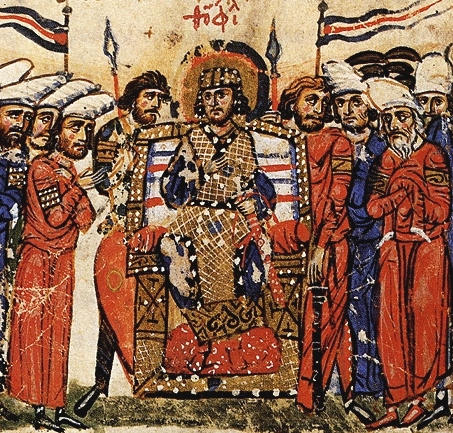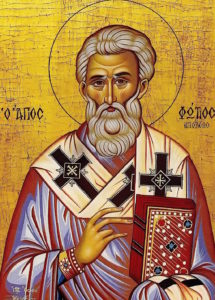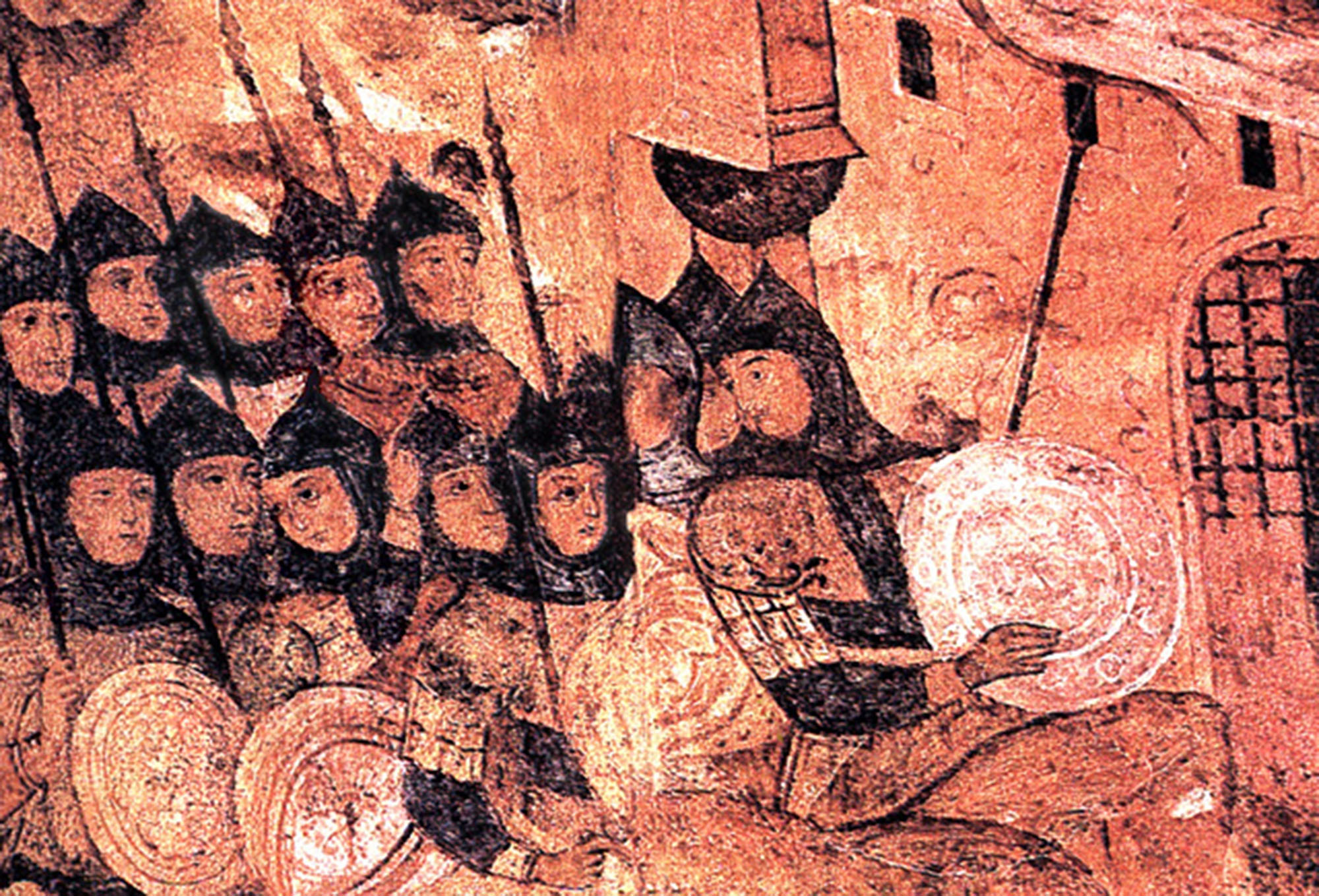The “fury of the Northmen” hit the Byzantine Empire in a surprise attack on the Queen of Cities.
Byzantine Emperor Theophilus was gracious in his treatment of the two ambassadors who had arrived unexpectedly in the imperial capital, Constantinople, from the Black Sea in the year 838. He sent them on to German Emperor Ludwig, asking him to send them home safely. Ludwig discovered the men were Swedes and was rightfully suspicious. Scandinavian Vikings had already begun ravaging his empire.

This event marked the first appearance on the world stage of Swedish Vikings, also known as Varangians, whom the Greeks called “Ros.” These Ros (or Rus) were bent on taking over the land of the Eastern Slavs and would give their name to Russia (Rossiya). Commercial relations followed, and the Byzantines had no reason to suspect any hostility. But the Ros were only waiting for an opportunity. Two Ros leaders, Askold and Dir, had set themselves up in Kiev and looked south across the Black Sea to Constantinople, the “Queen of Cities,” known to them as Miklagard (Big City) and to their Slav subjects as Tsargard (Caesar City).
The Vikings’ opportunity came in 860 when Theophilus’ successor, Emperor Michael III, was away campaigning against the Arabs along the Syrian border, where he suffered a severe defeat due to his military incompetence (no doubt aided by his constant drunkenness). Michael had taken with him all the elite army formations normally stationed in and around Constantinople, leaving behind only the normal city garrison under the command of City Prefect Nicetas Oryphas. The capital’s extensive suburbs and the thickly settled shores and islands of the Sea of Marmara were therefore left defenseless. The much feared Byzantine fleet was also absent, having sailed in support of operations against Arabs in the eastern Mediterranean and farther west against Danish Viking raids that had penetrated as far as Italy.
Suddenly on June 18, 860, “like a swarm of wasps,” according to Photios, the Archbishop of Constantinople, the Viking fleet of 200 ships emerged from the Bosporus, the narrow strait connecting the Sea of Marmara to the Black Sea, to assault Constantinople. As many as 20,000 Vikings surged ashore, but Oryphas was an able man and shut the gates of the capital just in time. While this saved the city from falling to the Vikings’ bold rush, this left the suburbs and hinterland unprotected. Photios later wrote of the “wholesale massacres” conducted by the Vikings as they looted and razed the suburbs. The nine islands in the Sea of Marmara were devastated. Vikings took the 22 servants of the former Patriarch Ignatius aboard their ships and hacked them to death with axes. The Byzantines were experiencing the same horrors other Vikings were inflicting on the coasts of Germany, England, Ireland, France, Muslim Spain and Italy. Indeed, the “fury of the Northmen,” as named in a Catholic prayer by the local monks, was at full flood.
Photios preached a sermon that betrayed the sense of desperation at this time: “Where is the Christ-loving emperor now? Where are the armies? Where are the arms, machines, military counsels, equipment? Are not all these withdrawn to meet an attack of other barbarians? And the emperor endures far distant labors beyond the frontiers; along with him the army went to share his hardships; manifest ruin and slaughter confront us.”
Oryphas showed vigor and skill in the defense of the city and later became one of the greatest of Byzantine admirals. Photios, one of the most revered patriarchs and the leading intellectual of his age, played a vital role by keeping Constantinople’s population from panicking through his example and exhortations. The great walls of the city, created in the 5th century by Theodosius II, were proof against the Vikings, who had no siege skills. This allowed time for the highly developed Byzantine military signal system to alert the emperor, who rode at breakneck speed back to the defense of his capital city. When he reached the Bosporus, he found his way barred by Viking ships. But at night aboard a fishing boat, he slipped through the unsuspecting enemy fleet.
One Byzantine chronicler recorded that upon arrival, the emperor with the patriarch went to the Church of Blachernae and took the precious talisman of the city, the sash of the Theotokos, the Mother of God, who was the patron of Constantinople. They carried the talisman along the circuit of the walls in a great procession, begging for divine intercession as the city’s population followed through the surrounding streets. Finally, at the Imperial Harbor, Michael took the garment and dipped it into the sea. Immediately, out of a clear sky, a storm appeared from the north that smashed many of the Viking ships. In a panic, the Viking survivors fled homeward.

Other contemporary sources do not include this story of the storm, but only that Photios carried the sacred garment around the walls, which did much for the morale of the city’s inhabitants. However, the timing of the Viking departure does appear to coincide with the return of the emperor. Whether he had anything to do with it is open to debate. Perhaps the invaders were sated with loot and concluded that they had no chance of breaking into the city. Whatever the reason, by early August the Vikings were gone. The Byzantines had barely begun to recover when a Danish Viking fleet operating in the Mediterranean the next year sailed up the Dardanelles, the western entrance to the Sea of Marmara, to further ravage the already blackened shores up to Constantinople’s walls.
Askold and Dir returned to Kiev laden with treasure, only to be murdered some years later by Oleg of the Rurikid Dynasty, who founded the first Russian state, Kievan Rus.
Emperor Michael III suffered a similar fate; he was assassinated in 867. His extreme military incompetence, wanton behavior and drunkenness made him a liability to the state. Basil I, whom Michael had made co-emperor in 866, had Michael murdered as he lay in a drunken stupor.
Peter Tsouras is the author of 26 books on military history. He served in the Army and Army Reserve and worked for the Defense Intelligence Agency until retiring in 2010 to devote himself to writing, his roses and his grandchildren.
Originally published in the May 2014 issue of Armchair General.





